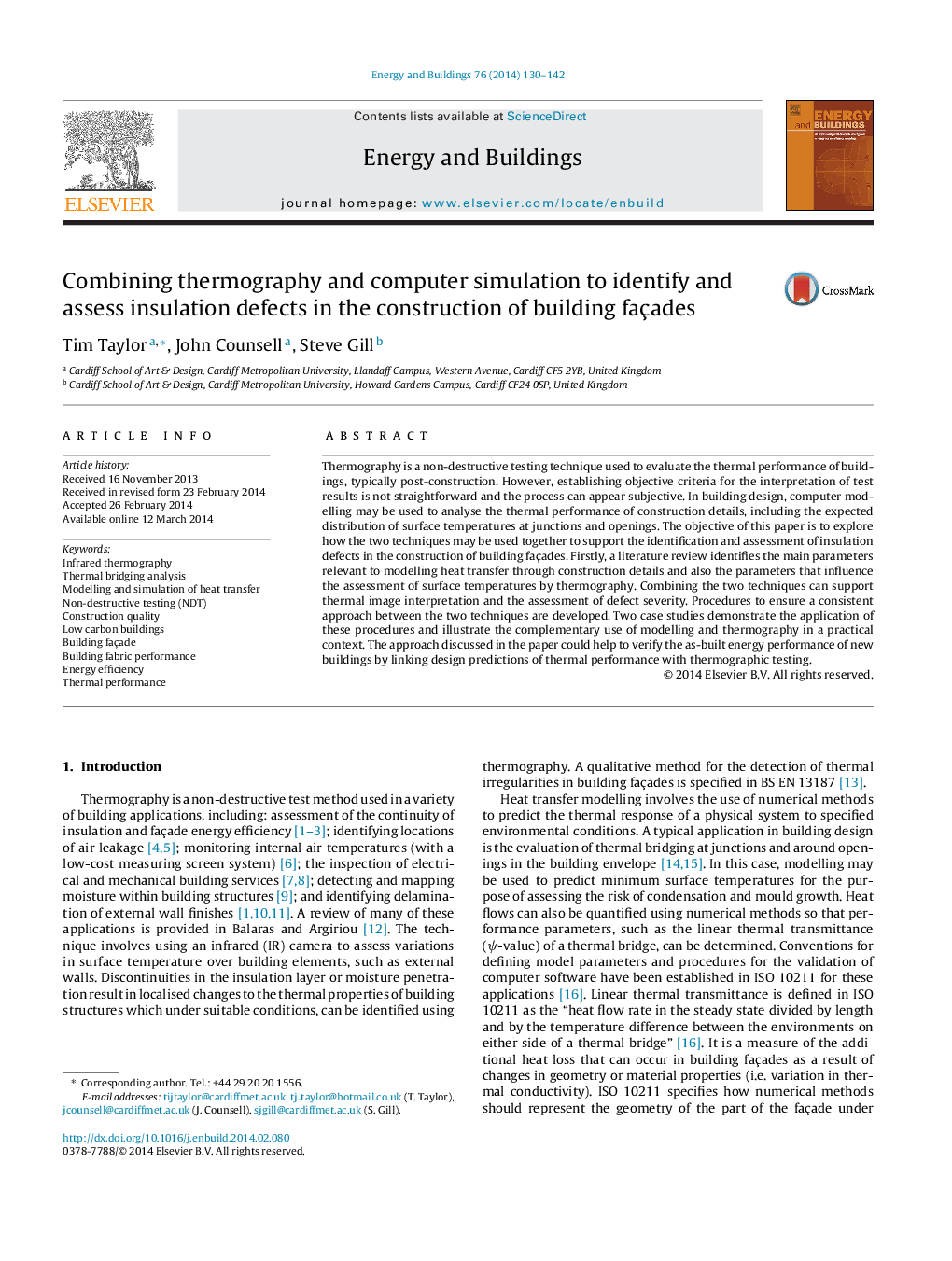| کد مقاله | کد نشریه | سال انتشار | مقاله انگلیسی | نسخه تمام متن |
|---|---|---|---|---|
| 6733593 | 504057 | 2014 | 13 صفحه PDF | دانلود رایگان |
عنوان انگلیسی مقاله ISI
Combining thermography and computer simulation to identify and assess insulation defects in the construction of building façades
ترجمه فارسی عنوان
ترکیبی از ترموگرافی و شبیه سازی کامپیوتری برای شناسایی و ارزیابی نقص های عایق در ساخت سازه های ساختمان
دانلود مقاله + سفارش ترجمه
دانلود مقاله ISI انگلیسی
رایگان برای ایرانیان
کلمات کلیدی
ترجمه چکیده
ترموگرافی یک روش تست غیر مخرب است که برای ارزیابی عملکرد حرارتی ساختمان ها، معمولا پس از ساخت و ساز استفاده می شود. با این حال، ایجاد معیارهای عینی برای تفسیر نتایج آزمون ساده نیست و این فرایند می تواند ذهنی باشد. در طراحی ساختمان، مدل سازی کامپیوتری ممکن است برای تجزیه و تحلیل عملکرد حرارتی جزئیات ساخت و ساز، از جمله توزیع مورد انتظار از دمای سطح در اتصالات و سوراخ ها استفاده شود. هدف از این مقاله کشف نحوه استفاده از دو تکنیک برای حمایت از شناسایی و ارزیابی نقص های عایق در ساخت و ساز ساختمان های سازه های فلزی می باشد. در ابتدا، بررسی ادبیات، پارامترهای اصلی مربوط به مدل سازی انتقال حرارت را از طریق جزئیات ساخت و ساز و همچنین پارامترهایی که بر ارزیابی درجه حرارت سطح توسط ترموگرافی تأثیر می گذارد، شناسایی می شود. ترکیب دو تکنیک می تواند تفسیر تصویر حرارتی و ارزیابی شدت نقص را پشتیبانی کند. روش هایی برای اطمینان از رویکرد سازگار بین دو تکنیک توسعه یافته است. دو مورد مطالعه نشان می دهد که استفاده از این روش ها و استفاده مجدد از مدل سازی و ترموگرافی در یک زمینه عملی را نشان می دهد. رویکرد مورد بحث در این مقاله می تواند به بررسی تأثیر انرژی ساخته شده از ساختمان های جدید با پیوند پیش بینی های طراحی حرارتی با آزمون ترموگرافی کمک کند.
موضوعات مرتبط
مهندسی و علوم پایه
مهندسی انرژی
انرژی های تجدید پذیر، توسعه پایدار و محیط زیست
چکیده انگلیسی
Thermography is a non-destructive testing technique used to evaluate the thermal performance of buildings, typically post-construction. However, establishing objective criteria for the interpretation of test results is not straightforward and the process can appear subjective. In building design, computer modelling may be used to analyse the thermal performance of construction details, including the expected distribution of surface temperatures at junctions and openings. The objective of this paper is to explore how the two techniques may be used together to support the identification and assessment of insulation defects in the construction of building façades. Firstly, a literature review identifies the main parameters relevant to modelling heat transfer through construction details and also the parameters that influence the assessment of surface temperatures by thermography. Combining the two techniques can support thermal image interpretation and the assessment of defect severity. Procedures to ensure a consistent approach between the two techniques are developed. Two case studies demonstrate the application of these procedures and illustrate the complementary use of modelling and thermography in a practical context. The approach discussed in the paper could help to verify the as-built energy performance of new buildings by linking design predictions of thermal performance with thermographic testing.
ناشر
Database: Elsevier - ScienceDirect (ساینس دایرکت)
Journal: Energy and Buildings - Volume 76, June 2014, Pages 130-142
Journal: Energy and Buildings - Volume 76, June 2014, Pages 130-142
نویسندگان
Tim Taylor, John Counsell, Steve Gill,
